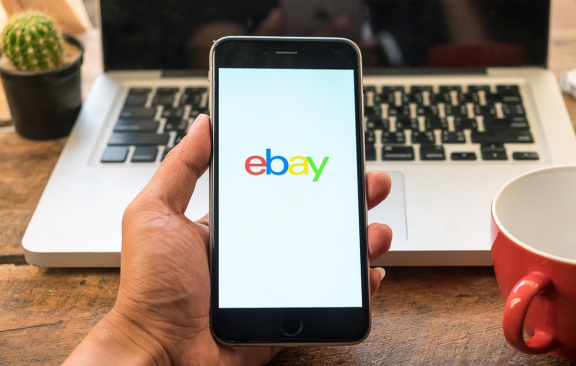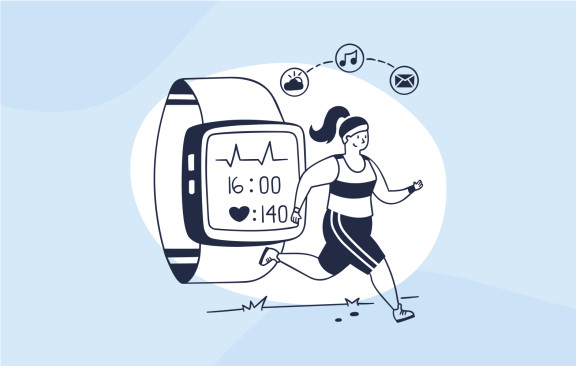How to sell on eBay?
💡 Quick Answer: Setting up an eBay account is easy. But actually generating sales can be more challenging. The most important aspect is knowing what to sell. You need to research what products are in demand and understand the price point for similar items. With a great product, the next step is to craft compelling listings with high-quality images and accurate descriptions. Focus on delivering excellent customer service to build up positive feedback. This will increase your visibility in search results and help you convert more shoppers.
Introduction
Are you thinking of selling on eBay?
That’s a smart choice. eBay is one of the most popular eCommerce platforms where millions of people shop every day. Imagine the huge audience of potential customers you could tap into!
But here’s the thing: Succeeding on eBay isn’t as simple as snapping a pic, listing an item, and waiting for the sales to roll in.
Preparation is key.
You need to know what to sell, how much to charge, and how to optimize your listings so they rank high in search results.
There’s a bit to juggle. But we’re here to make sure you don’t miss anything.
In this guide, we’ll reveal everything you need to know to start selling on eBay. You’ll learn how to level up from a casual list-and-sell amateur to an unstoppable eBay pro.
Let’s dive in.
Why sell on eBay
While eBay initially made a name for itself as the go-to platform for second-hand treasures, it’s become a powerful channel for big brands and smaller eCommerce businesses.
Here are the reasons why you should be selling on eBay:
Large audience
eBay has a huge global user base. That means you can get your products in front of millions of shoppers worldwide. In their latest financial report, eBay revealed that it currently has 132 million active buyers on the platform:

Extensive product range
With such a big audience, you can guarantee that there are shoppers on eBay who will be interested in what you’re selling - even if it’s a super-niche product. Whether you’re selling handmade crafts, electronics, or clothing, you’ll find your target audience on eBay.
This diversity also makes it easier to pivot and expand your range. If you see potential in a product idea, you don’t have to worry if it’s a good fit for the eBay platform.
Easy to start
eBay is easier to use than many other platforms. Setting up an account and listing products is simple. It’s also relatively painless to transition to eBay from other platforms. There’s a bulk listing tool that you can use to integrate your existing product catalog.
Lower fees
Generally, eBay fees are lower than Amazon, Etsy, and most other platforms. This is especially true for lower-priced items. Check out our comparison of eBay vs. Amazon to learn more about the selling fees charged by each platform and other key differences.
eBay isn’t the only option for selling online. Discover the best eBay alternatives in our detailed guide.
How to sell on eBay (step-by-step)
Ready to become a successful eBay seller? Follow the steps below and go from a newbie to a pro seller in no time.
And if you have any questions about the platform, check out our hub of eBay selling guides. We’ve covered everything from promoted listings to eBay apps that make you a more productive seller.
1. Create an eBay account
The first thing you need to do is set up your eBay seller account. Head over to eBay and click the ‘Register’ link in the top-left:

This will take you to a form asking for your details. eBay will automatically choose a personal account setup, so make sure you switch to ‘Business’ if you want an eBay business account.

A business account will allow you to add your own brand name and create a more professional-looking eBay profile.
Add a username
Now, you’ll need to create a username. This is how buyers will know you on eBay. Think of a name that’s easy to remember and has something to do with what you’re selling. For example, a username like “VintageToySeller” could work if you’re selling vintage toys.

Don’t rush your decision. Take some time to find a username that is a good fit for your store.
Register as a business seller
Next, you’ll need to register as a business seller. If your business is registered as a legal entity, you’ll have to provide the following details:

If you run your eCommerce business as a sole trader, you need to provide your personal details and checking account.

Fill in your details and add your bank account information to complete the registration process.

Once you’re done, you’ll receive an email confirmation. Click the link in the email to complete your account setup.
Are you looking to dropship products on eBay? It can be a low-risk way to get started with eCommerce. But you need to do it the right way. Check out the resources below to learn how to dropship on eBay.
2. Sign up for eBay Stores (optional)
If you’re serious about selling on eBay, you should consider paying for an eBay store subscription. Pricing ranges from $4.95 monthly for small sellers to $2,999.95 for enterprise businesses.

It’s worth every cent if you want to make a mark on eBay. You can access a bunch of tools designed to help you become a top seller.
Subscribers can bulk list products and manage their inventory more efficiently. eBay also provides detailed analytics. These reports give insights into sales trends, traffic sources, and buyer behavior - all great information for optimizing your listings and strategy.
Paid subscribers can also access the Terapeak product research tool. It helps you find trending products and price your items based on market data. We’ll cover the Terapeak tool in more detail later in the guide.
The biggest benefit of an eBay subscription is that you get to create your own store. You can customize your storefront to showcase your brand.

You can also save some cash. eBay Store subscribers get discounts on fees. Plus, every month, you can list some items for free.
3. Research and product selection
The next step is to fill your store with products. So what should you sell?
Well, this is one of the biggest hurdles you’ll face. According to a recent survey of eBay sellers, products were ranked as the most significant challenge selling on the platform.

eBay is a massive marketplace with buyers for almost every niche. But some product categories are more popular than others.
A recent study by Edison Trends revealed that electronics and accessories are the biggest eBay category based on the percentage of items sold. Health & beauty and clothing are also lucrative niches.

Most guides will tell you just to sell what you’re interested in. However, that’s not always the best option. Sure, it helps if you love the products you sell. But you also want to make money.
Two key elements make a great eBay product: demand and profitability.
How much do people want the product? And how much profit can you make from it?
Here are three fool-proof ways to find lucrative products to sell on eBay:
See what’s trending
Google Trends is one of the best free tools to see what’s popular and trending. Type in a product or category, and you can see how many people search for it over time.
This can give you an idea of the interest in a product. Pay close attention to seasonality. You may find that some products experience fluctuating demand depending on the time of year.
Analyze competitors
You don’t always have to reinvent the wheel. Sometimes, you can get great product ideas by looking at what other sellers are doing.
Go to eBay and search for products similar to what you’re thinking of selling. Check out the top sellers. What are their best-selling items? This can give you hints on what buyers like.

If you subscribe to eBay Stores, you can use the Terapeak market research tool to streamline this process. You can access Terapeak through the “Seller Hub.” Click the “Research” tab, and you’ll find Terapeak Product Research.
Type in a product or category you’re interested in, and the tool will show you a bunch of useful metrics:

Average sold price
This shows the average price the product has been selling for.
Sell-through
This indicates the percentage of listings that were successfully sold. A higher percentage suggests the product is in demand.
Total sales
This gives an idea of the total revenue for the product over a specific time frame.
Terapeak also shows you the top sellers for a particular product. Take a look at the top results to identify keywords to include in your listing and find ways to make your product stand out.
Use SaleHoo Labs
SaleHoo Labs is a powerful tool that helps you discover trending products on online marketplaces, including eBay. First, select a category that interests you. Then, use the filters to narrow in on winning product ideas.
Sell Rate
The percentage of listings that have successfully sold compared to the total number of listings.
Average Price
The average selling price of the product. It’s useful for working out potential profit margins.
Competition
The number of sellers listing the same product. Lower competition usually means there is room for new sellers to capture sales.
Once you’ve set your filters, SaleHoo Labs will display a list of trending products within your chosen category.

One of the benefits of SaleHoo Labs is that you can easily find reliable suppliers for the products you’re interested in. Click on a result to see where you can source the product.
Before you order in bulk from a supplier, make sure you ask for a sample product first. It’s always a good idea to judge the item’s quality and ensure it meets your expectations before placing a large order.
Need some help coming up with eBay product ideas? Check out the resources below:
4. List your items
With some winning products to sell, it’s time to create your eBay listings. Head over to eBay’s homepage and click the ‘Sell’ button.
The first thing you need to do is name your product. This is super important. It’s the first thing potential buyers see and plays a significant role in search visibility.

Start with the most important keywords buyers might use to search for your item. Think about the words you’d use if you were trying to find the item.
If you need some help, you can use the eBay autocomplete feature. Just type your product name into the eBay search bar, and you’ll see a list of related terms.

These are the terms that people are actually typing into eBay. It’s a great way to find longtail keywords to add to your product listing.
Once you’ve added your product name, you’ll be asked to add details, including the product category, color, sizing, etc. Make sure these details are correct, as eBay will use them to match your listing to shopper search queries.

The next step is to confirm the condition of your item.

Now, it’s time to write your product description. This is your opportunity to ‘sell’ your product. Focus on the benefits first. How will your product improve the lives of your customers?

Try to get shoppers to visualize themselves with the product. For example, if you’re selling a dress, you could mention it’s perfect for summer afternoons or evening events. Once you’ve explained the benefits, move on to the product features. Include any unique characteristics or attributes that buyers want to know.
If you find writing descriptions hard, check out our guide on what not to do. You’ll learn the top seven mistakes sellers make when writing eBay product descriptions.
Your title and description are essential for getting your product found in eBay search results. But your product images are what get people to click on your listings.

The key thing here is high-quality images. Make sure your product photos are high-resolution and show your product clearly. You should also capture your product from different angles - the front, side, back, and close-ups to highlight any details. It’s all about making your product look as appealing as possible.
You can learn more tips on how to take photos for eBay in our actionable and easy-to-understand guide.
5. Determine your pricing
This is super important. If the price is too high, buyers will scroll past. Price too low, and you’ll leave money on the table. eBay will recommend a price based on your product details, but this is just a guide.

First, you need to decide whether to create an online auction or a Buy It Now listing:
Online auction
Auction-style listings are the best option if you have a one-off item or something rare with high demand. Start the auction with a low price to attract potential buyers. As the bids come in, the price will climb.
Buy It Now
For professional eCommerce sellers, fixed-price listings are the better option. Instead of an auction, set a firm, fixed price beforehand. This way, buyers can purchase on the spot without playing the waiting game.
Whichever pricing option you choose, research how much similar products sell for on eBay. This will give you a ballpark figure and help you find the right pricing for your product.
6. Set return and exchange policies
Offering a 30-day return policy is a good idea if you’re selling new items. This helps buyers feel more confident in making a purchase.
You should also consider offering free returns. Shoppers are more likely to buy from you if they know they won’t have extra fees to cover if they change their minds. A recent study found that 53% of shoppers will choose one store over another if they offer free returns:

Your return and exchange policy will be included in the designated section of your eBay listing. But you can also add key points to your item description.
7. Set up shipping options
The last thing you need to do before your listing goes live is set up your shipping options. Speed is key here. The faster you can get your product to your customers, the better. eBay will recommend a shipping option based on your item:

But you do have options. You can choose a flat rate or a calculated rate.
Flat rate
This is a one-size-fits-all approach. The buyer pays the same shipping fee whether they are next door or three states away. It’s straightforward and eliminates any surprises for your customers.
Calculated rate
This adjusts the shipping cost based on the buyer’s location. It factors in the distance and the weight or size of the item. While it requires more setup, it helps you avoid underestimating shipping costs.
Whichever option you choose, try to dispatch orders as soon as possible. With Amazon and other retailers offering next-day deliveries, shipping expectations are higher than ever.
You don’t have to limit yourself to buyers in your country of residence. eBay is a global platform that can help you reach an international customer base. You can use eBay’s International Shipping Program to fulfill orders around the globe.
All you need to do is send your sold items to your local eBay shipping center. From there, eBay handles all the customs forms and paperwork required. It also protects you from the cost of returns and any bad feedback due to fulfillment issues.
After setting up shipping details, you can launch your listing and start making sales.
8. Managing your listings
Your job isn’t over once you publish your listing. To become a successful seller, you need to make sure you’re doing everything possible to drive sales.
The eBay Seller Hub gives you a helpful overview of your listings and any tasks that you need to do.

There are three key things to monitor:
Stock levels
Make sure you update your eBay listings. If you run out of an item, update your listing to show it’s out of stock. This helps avoid customer disappointment and negative feedback that could impact your visibility on the platform.
Respond quickly to customer questions
Got a question from a potential buyer? Answer it as soon as possible. A prompt, friendly reply can make the difference between a sale and a missed opportunity.
Listing performance
Always keep an eye on how your listings are performing. If a product is not selling well, consider updating the listing with better photos or targeting a different keyword.
9. Build a positive seller reputation
Buyer feedback can have a significant impact on eBay sales. The more positive reviews you get, the more likely shoppers are to trust you and buy from you.

A recent study found that bad reviews on eBay can snowball. Once you get a bad review, other buyers are more likely to leave negative feedback. And that can lead to less visibility in search results and reduced sales.
So, how do you get more positive reviews?
Accurate product descriptions
Make sure every product listing is described accurately. Include details about sizing, colors, and any other important features buyers want to know before they click the ‘Buy’ button. This means no surprises for the buyer when they receive their order.
Quick shipping
Dispatch orders as fast as possible. If you promise a specific delivery timeline, stick to it. And package your items securely to prevent damage during transit.
Personal touch
Consider including a thank-you note or a small freebie in the package. This can be a great way to enhance the unboxing experience and make a good impression on buyers.
Ask politely
After a successful transaction, reach out to the buyer with a friendly message. Thank them for their purchase and ask if they could leave a review.
Want some more tips on how to get more customer reviews? Check out our guide on eBay feedback to learn the best strategies.
10. eBay policies and compliance
eBay has a bunch of policies that sellers have to follow. If you don’t follow the rules, there might be consequences. This can range from a simple warning to more serious actions like removing your listings or getting banned from selling.

To make sure you stay in the clear, it’s a good idea to visit eBay’s official policy pages and read them for yourself. Here are the key areas you should be aware of:
Prohibited and restricted items
Certain items are completely off-limits on eBay. This list includes illegal drugs, firearms, and stolen goods, to name a few. It also includes restricted products like alcohol and tobacco. Check the list of prohibited items before you create a listing.
Shipping and returns
Keep your shipping costs transparent. Clearly state whether shipping is free or if there’s a cost. You also need to make your returns policy clear. Even if you don’t accept returns, it should be mentioned in your listing. No one likes hidden fees.
Feedback manipulation
Don’t buy or trade positive reviews. eBay has ways to detect and penalize feedback manipulation. Sellers found engaging in these practices may have their accounts suspended or banned.
Outside sales
Moving transactions off of eBay is a big no-no. It’s against the rules and can be risky for sellers and buyers.
Common eBay selling mistakes and how to avoid them
eBay can be a goldmine for eCommerce businesses. But like any platform, it has its issues. Here are the most common challenges sellers face and how to overcome them.
Negative feedback
Feedback is integral to how eBay works. While positive reviews can boost your reputation and drive more sales, negative feedback can do the opposite. If you sell a lot of items, you will get some negative feedback. Something will inevitably go wrong at some point. How you handle negative feedback is vital to your success on the platform.
Solution
The best approach is to view feedback as an opportunity for growth. When you get an unfavorable review, stay composed. Acknowledge the buyer’s concerns, show that you’re willing to rectify the situation, and then propose a solution. This approach can reassure the unhappy buyer and show potential customers that you care about your customers.
Limiting to domestic sales
Many eBay sellers restrict themselves to their local market. This is usually because they are unfamiliar with international shipping or don’t want to handle the process of sending goods to a different country. This can significantly reduce the potential for sales.
Solution
There’s a whole world of customers you can access with eBay. The easiest way to get started is to use eBay’s International Shipping Program. You send your items to eBay's global shipping center, and they handle the customs forms and shipping logistics, so there’s no reason not to sell worldwide.
Over-complicated listings
To try and make listings stand out, some sellers overcomplicate them with multiple fonts, clashing colors, and wordy descriptions. This can overwhelm potential buyers, making them less likely to purchase.
Solution
Keep it simple. A straightforward layout with a clear font can improve readability and boost conversions. Make it easy for shoppers to quickly find the information they are looking for and make a purchasing decision.
Underestimating selling costs
eBay fees are cheaper than many platforms, but there are still costs involved. Don’t forget to take into account the cost of listing your product, buying packaging, shipping, and any other fees that could impact your profit margin.
Solution
Create a comprehensive checklist detailing every potential cost, from sourcing the product right through to packaging and shipping charges. Knowing the true profit margin for every sale will help you set the right product pricing.
Racing to offer the lowest price
Here’s the thing: eBay can be competitive. The problem with some niches is that sellers get into a continuous cycle of price wars. Sellers try to out-price competitors, leading to minimal profit margins.
Solution
Price is a significant factor for buyers, but it’s not the only one. Instead of focusing solely on being the cheapest, highlight your unique value. This could be better customer service, loyalty rewards, or faster shipping times. Building a unique selling proposition (USP) allows you to charge better prices without losing sales.
Grow your business on eBay in 2023
eBay offers an excellent opportunity to earn and grow your eCommerce business. It’s one of the best places to sell online. There are three key ingredients to succeed on eBay:
Products
Find out what items people really want and how much they are willing to pay for them. Doing some homework at the start will set your business up for success.
Quality listings
Remember, your listing title is how people will find you on eBay, and your images are what gets them to click. Make sure you use relevant keywords and high-quality photos.
Build your feedback
Focus on building up positive feedback by responding quickly to messages, dispatching orders promptly, and keeping your listings updated.
Need a hand finding reliable suppliers?
The SaleHoo Directory gives you access to over 8,000 trusted wholesale and dropshipping suppliers. Every supplier in the directory is vetted and verified. It’s the best place to find products to sell on eBay.
If you have any questions about selling on eBay or need some advice, reach out to our friendly customer support team.









